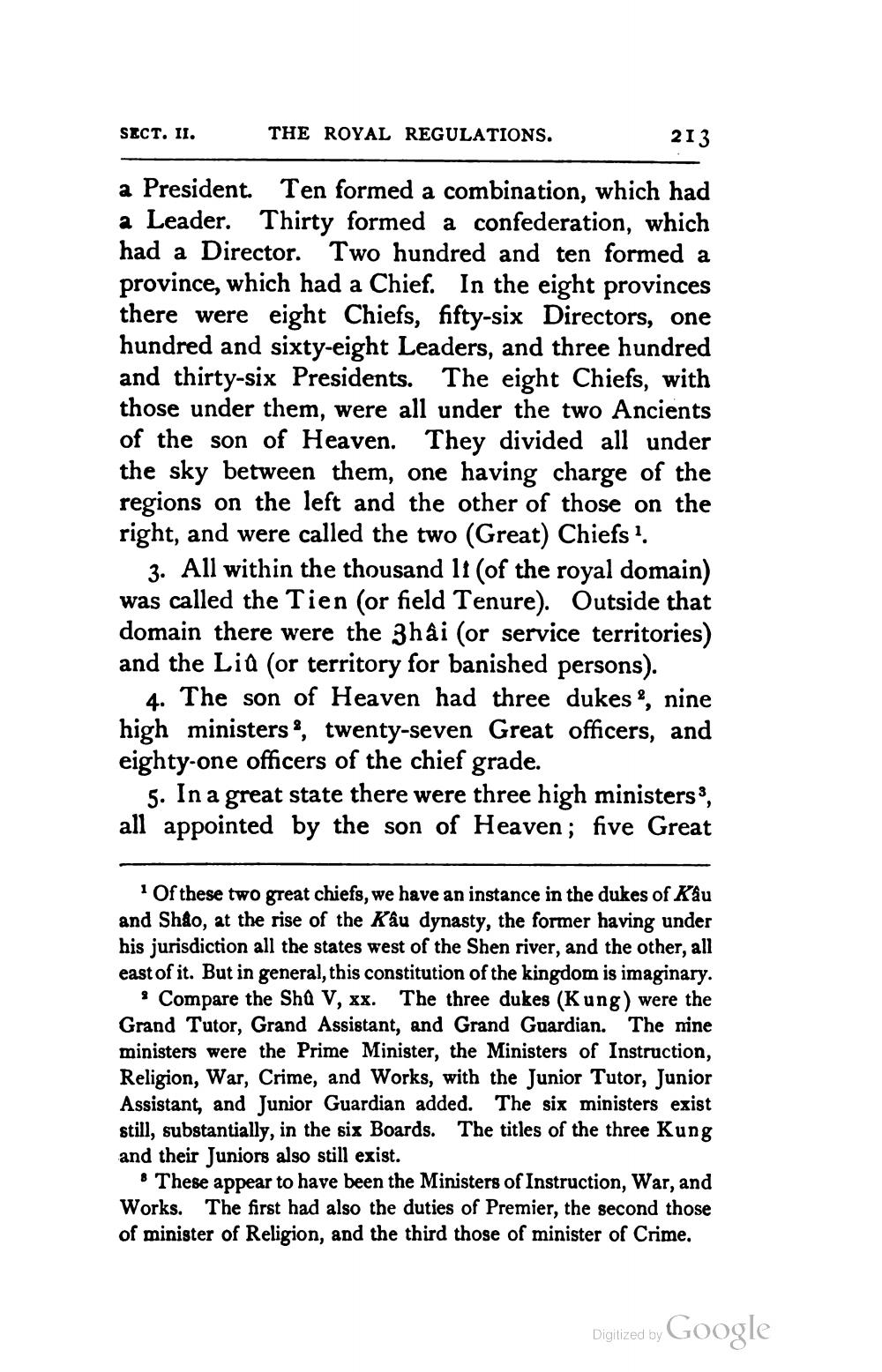________________
213
a President. Ten formed a combination, which had a Leader. Thirty formed a confederation, which had a Director. Two hundred and ten formed a province, which had a Chief. In the eight provinces there were eight Chiefs, fifty-six Directors, one hundred and sixty-eight Leaders, and three hundred and thirty-six Presidents. The eight Chiefs, with those under them, were all under the two Ancients of the son of Heaven. They divided all under the sky between them, one having charge of the regions on the left and the other of those on the right, and were called the two (Great) Chiefs 1.
3. All within the thousand It (of the royal domain) was called the Tien (or field Tenure). Outside that domain there were the 3hâi (or service territories) and the Liû (or territory for banished persons).
4. The son of Heaven had three dukes, nine high ministers, twenty-seven Great officers, and eighty-one officers of the chief grade.
5. In a great state there were three high ministers3, all appointed by the son of Heaven; five Great
SECT. II.
THE ROYAL REGULATIONS.
1 Of these two great chiefs, we have an instance in the dukes of Kâu and Shao, at the rise of the Kâu dynasty, the former having under his jurisdiction all the states west of the Shen river, and the other, all east of it. But in general, this constitution of the kingdom is imaginary. Compare the Shû V, xx. The three dukes (Kung) were the Grand Tutor, Grand Assistant, and Grand Guardian. The mine ministers were the Prime Minister, the Ministers of Instruction, Religion, War, Crime, and Works, with the Junior Tutor, Junior Assistant, and Junior Guardian added. The six ministers exist still, substantially, in the six Boards. The titles of the three Kung and their Juniors also still exist.
• These appear to have been the Ministers of Instruction, War, and Works. The first had also the duties of Premier, the second those of minister of Religion, and the third those of minister of Crime.
Digitized by
Google




